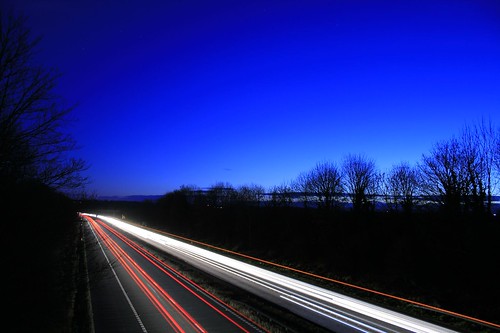 Not far from where I live, there is a DIY store on an out-of-town trading estate. It is surrounded on all sides by dual carriageway roads and the only, real, access to it is by vehicular transport. However on the opposite side of this dual carriageway is a housing estate. I was waiting at the nearby traffic lights yesterday and noticed that from the fence surrounding the estate there appeared to be the beginnings of a pathway that had been worn by pedestrians across the central grass reservation of the dual carriageway and into a hole in the fence surrounding the DIY store. As I watched I saw at least three people take the route from the estate, across the dual carriageway, into the store.
Not far from where I live, there is a DIY store on an out-of-town trading estate. It is surrounded on all sides by dual carriageway roads and the only, real, access to it is by vehicular transport. However on the opposite side of this dual carriageway is a housing estate. I was waiting at the nearby traffic lights yesterday and noticed that from the fence surrounding the estate there appeared to be the beginnings of a pathway that had been worn by pedestrians across the central grass reservation of the dual carriageway and into a hole in the fence surrounding the DIY store. As I watched I saw at least three people take the route from the estate, across the dual carriageway, into the store.It struck me as being a prime example of people finding a way of doing things that wasn't originally anticipated in the design of the thing.
When they first built the store and surrounded it by roads, nobody imagined that people would actually want to walk to the store. But people found a way. What's more they found the path of least resistance to achieve their goals.
The same happens in processes. You can design a process in whatever way you want, but people (users) will always find the easiest way to achieve their goal, and it may ot be by using the process in the way you anticipated. More often than not this should be the way the process should be designed in the first place.
Always bear this in mind when designing processes.
Photo Credit: s_gibson72 via Compfight cc
Reminder: 'The Perfect Process Project Second Edition' is now available. Don't miss the chance to get this valuable insight into how to make business processes work for you. Click this link and follow the instructions to get this book.
All information is Copyright (C) G Comerford
See related info below

